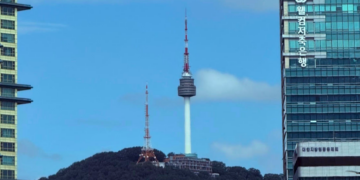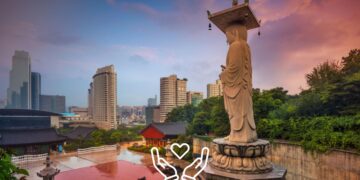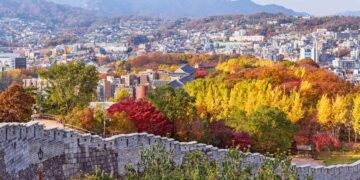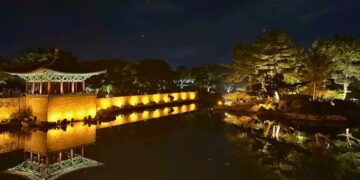Last Updated on 6 months by admin
Dokdo Island (독도) is one of the most beautiful places in Korea. It is well-known for its natural environment and stunning views. Each year, over 130,000 people visit the island to enjoy its beauty. For centuries, the island has been a symbol of Korean pride and national identity. It is also a place of historical significance, as it was the site of a famous battle during the Korean War.
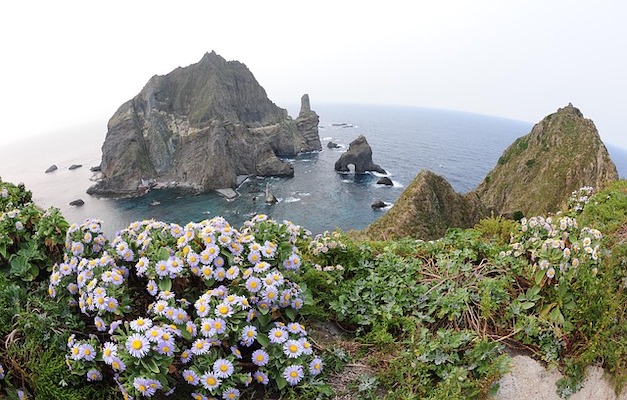
Dokdo is an island in the Sea of Japan between Korea and Japan, mostly made up of boulders and pebbles. Its surrounding sea is full of fish resources, as it is part of Korea’s easternmost territory.
Where Does the Island Get Its Name?
Dokdo is a group of volcanic and rocky islands located off the east coast of Korea. The island was formerly known as Usando or Gajido. Residents who resided on Ulleungdo, the closest island to Dokdo, named it Dokdo in 1882 because they noticed the area’s majority of rocks. The name “Dokdo” is derived from the terms “dol” or “dok” in the local dialect, meaning “rock,” and “do,” which is a translation of the Chinese characters for the word “seom,” indicating an island.
History of the Island

This tiny island, a political hotspot with a sordid backstory dating back to 512 A.D., has an exciting and contentious history. Since time immemorial, Korean and Japanese fishers have utilized the adjacent seas as a fishing ground. Since the 6th century, references to a possible Korean island called Dokdo have been found in historical texts.
For years, Korea and Japan have been disputing ownership of the island, with each country claiming it as its own. In 1905, Japan declared it a terra nullius (uninhabited land) and annexed it into its territory. Korea was a Japanese colony at the time, and had no authority to protest.
After World War II, the San Francisco Peace Treaty of 1952 gave Korea control over Jeju, Ulleungdo and Geommun-do. Dokdo was excluded from the agreement and has been under Korean control. Japan still claims sovereignty over the islands, a major issue in Japanese-Korean relations.
And what is the relevance of Liancourt Rocks?
The Liancourt Rocks, known as Dokdo (독도) in South Korea and Takeshima (竹島) in Japan, are a small group of islets in the Sea of Japan (East Sea) that hold significant geopolitical, cultural, and ecological relevance. The name “Liancourt Rocks” was coined by Western sailors in the 19th century, but today, the islets are the subject of a long-standing territorial dispute between South Korea and Japan.
Because of the disputes, the U.S. and most global organizations refer to the territory neutrally as the “Liancourt Rocks.”
About Dokdo Island
Located 87.4 kilometers east of Ulleungdo Island, Dokdo is a remote island group off Korea’s eastern coast. It consists of two main islets: Dongdo (East Island) and Seodo (West Island). Together, they form a protected natural reserve designated as a Natural Monument, home to several rare and endangered bird species.
For many years, civilian access to Dokdo was restricted under Article 33 of the Cultural Heritage Protection Act. However, on March 24, 2005, the law was amended to allow limited public visits to Dongdo and Seodo under specific conditions. Since then, further policy adjustments, such as lifting the cap on daily visitor numbers, have made it easier for more people to experience Dokdo’s natural beauty.
Dongdo, located on the southeastern side, spans a surface area of 73,297 square meters with a circumference of 2.8 kilometers. Its highest point rises to 98.6 meters. The islet is equipped with a lighthouse, a wharf, and various marine and fishery facilities. Seodo, on the northwestern side, is slightly larger at 88,740 square meters and has a circumference of 2.6 kilometers. Its peak reaches 168.5 meters. Seodo also hosts living quarters for local residents, serving as a refuge for fishers during emergencies.
Surrounding the main islets are a number of distinct rock formations, including Gajaebawi Rock, Chotdaebawi Rock, and Eolgulbawi Rock.
Life and Habitat at Dokdo Island
While the islands are tiny, Dokdo is recognized for its bountiful fishing grounds and diverse sea life that inhabit them, including various types of seaweed and kelp, squid, Alaskan pollock, codfish, and octopus. Dokdo was a popular place for sea lions until the 1950s. The island is famous for its ecological biodiversity. Scientists have taken note of this, and Dokdo is recognized as a hotspot for biodiversity.
The islets of Dokdo are volcanic rocks that formed long ago. The rocks are covered in a thin layer of soil and moss. The Dokdo islets have a diverse range of plant life, including eighty species of plants. There are also over twenty-two species of birds and thirty-seven types of insects living there.
There are approximately 26 residents on Dokdo. This includes one civilian resident, three government officials, two lighthouse managers, and 20 police personnel (as of June 2025).
Tourism on Dokdo: What You Should Know
Over the past decade, more than 3.4 million tourists have visited Dongdo (East Islet), with a daily number averaging to 500 as of June 2025.
But, tourism on Dokdo is unique and tightly regulated due to the island’s geopolitical significance, ecological sensitivity, and limited infrastructure.
How to get there?
Most visitors depart from Ulleungdo Island, which itself is accessible by ferry from cities like Pohang, Donghae, or Gangneung. The only way to get to Dokdo is by ferry. Daily ferries to Dokdo operate from Ulleungdo (weather permitting). The ferry makes two trips a day, one in the morning and one in the afternoon. The trip takes about 1.5–2.5 hours depending on sea conditions.
And if you want to visit Seodo, you will need to take a prior permission from Ulleung-gun.
If the weather is not favorable, entry to Dokdo may be restricted, including sightseeing on Dongdo.
What is the best time to visit Dokdo?
The best time to visit Dokdo is from late May to early October when the weather is mild and there are few typhoons.
Usual duration of trips
Visits to Dokdo are typically limited to 20–30 minutes. Tourists are not allowed to freely explore and must stay within designated areas, usually on Dongdo (East Island).
And you cannot stay overnight on the island.
What to Expect
- Docking at Dongdo: Visitors are allowed to disembark at Dongdo if sea conditions are calm.
- Restricted Access: Seodo (West Island) is not open to the public and is home to Korea Coast Guard facilities and limited residential quarters.
- Sightseeing: Although brief, the visit offers a chance to walk along a short path, take in photo opportunities, and gain a glimpse of the island’s ecological and geopolitical significance.
What to See on the Dokdo Island?
Dokdo is a protected natural monument known for its seabird populations and marine biodiversity.
There are several things to see on Dokdo. The first is the Haenam Observation Deck. You can see all of Ulleungdo and an uninhabited island called Jukdo. You can also see a variety of birds and other wildlife.
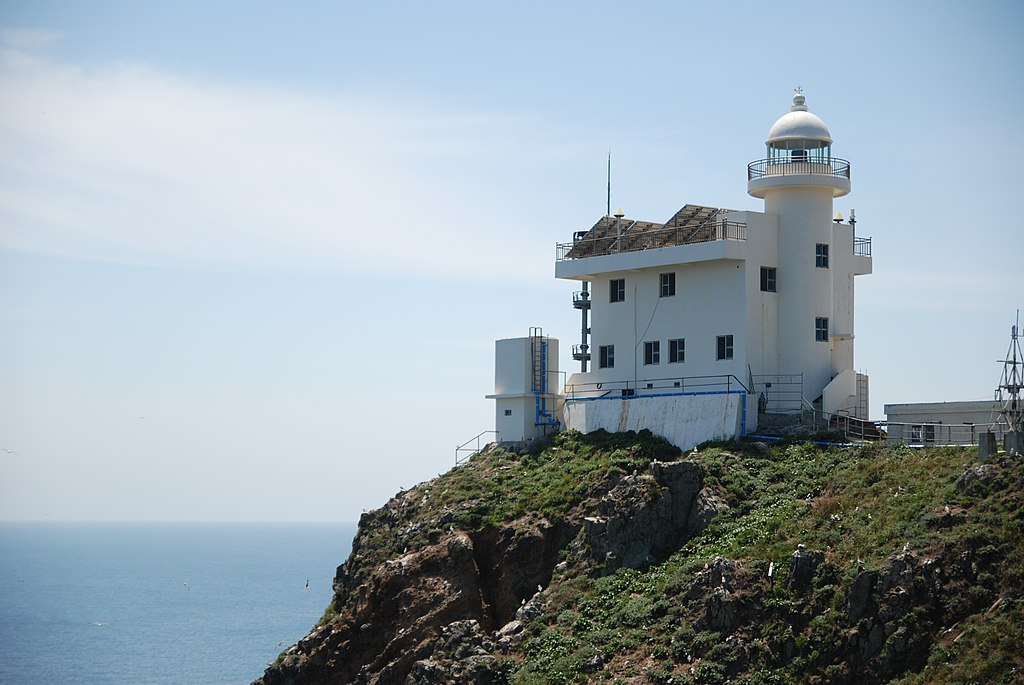
The second thing to see is the Dokdo Museum. The museum features a range of exhibits showcasing the history, culture, and ecology of Dokdo.
The third thing to see is the Lighthouse. The lighthouse was built in 1902 and is the oldest in Korea. It is also the only one that is still in use.
The small island is primarily composed of volcanic rock, with some areas featuring lush grass. The warm and cool currents converge near the island, making it an ideal habitat for fish to thrive. Dokdo is also home to a diverse range of bird species. The island was closed off to the public to protect its natural ecology.
Dokdo is a beautiful but disputed island. Despite its disputed status, Dokdo is definitely worth a visit!
Important Considerations
- Weather-Dependent: Ferries often cancel due to rough seas, especially in winter.
- Limited Facilities: The island has no cafes, shops, or restrooms.
- Passport Not Required: South Korean citizens are exempt from requiring a passport. Foreigners may require additional permissions or tour arrangements.
Is Dokdo Worth Visiting?
If you’re a traveler interested in:
- Remote destinations
- Korean history and geopolitics
- Unique marine landscapes
…then yes, a trip to Dokdo offers a once-in-a-lifetime experience. However, be prepared for a brief, structured visit with minimal tourist amenities. It’s more of a symbolic pilgrimage than a leisure outing.
Related Posts
17,526 total views, 3 views today



